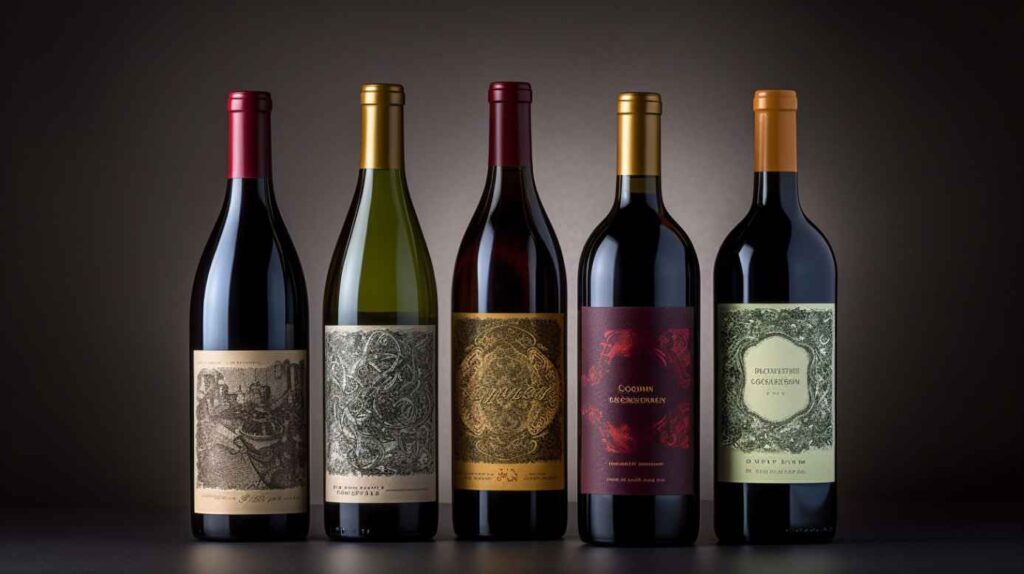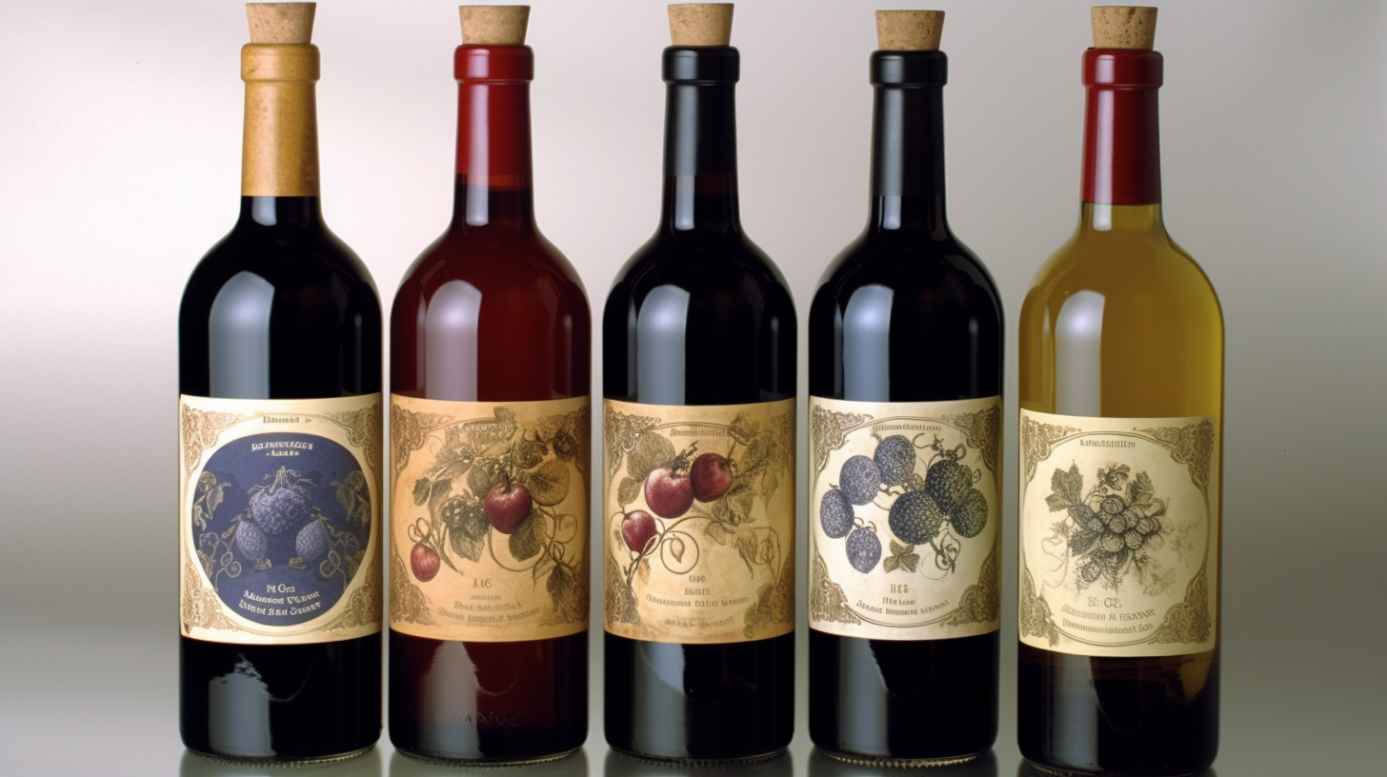The world of wine and spirits is as rich and varied as the beverages themselves, and creating a custom label that does justice to the contents of the bottle is an art in its own right. This comprehensive guide is designed to take you through the process, from understanding the importance of personalized labels to exploring creative design ideas, ensuring legal compliance, and navigating the challenges that might arise along the way.
In an industry flooded with options, standing out on the shelf is crucial. Custom wine and spirit labels offer a unique opportunity to make a lasting first impression. They are not just a legal requirement; they are a canvas upon which a brand can tell its story, showcase its personality, and connect with consumers.
The Importance of Personalized Labels
Personalized wine and spirit labels serve multiple purposes. They play a crucial role in enhancing brand identity, making a product instantly recognizable. When a brand consistently presents itself, it builds trust and familiarity among its target audience. This is particularly important in the wine and spirits industry, where heritage and authenticity are highly valued.
Attracting the right audience is another significant aspect of personalized labeling. A well-designed label speaks directly to the brand’s target demographic, resonating with their preferences and values. Whether it’s a luxurious, minimalist design for a premium product or a fun, vibrant label for a more laid-back brand, getting the design right is key.
Legal compliance and providing necessary information is a non-negotiable aspect of label design in this industry. Labels must include specific details such as alcohol content, volume, and country of origin. Ensuring that all the required information is present and correct is paramount.

Getting Started with Design
Before diving into design, it’s essential to choose the right material for your label. The material should complement the product and withstand conditions such as moisture and temperature variations. Common choices include paper, plastic, and foil.
Selecting a design software that suits your needs is the next step. There are various options available, from professional design software like Adobe Illustrator to more user-friendly options like Canva. Whichever tool you choose, ensure it gives you the flexibility and control needed to bring your vision to life.
Incorporating brand elements such as logos, color schemes, and typography ensures consistency across your product range. These elements should be an integral part of your label design, helping to build a strong and recognizable brand identity.
Designing for Different Types of Wine and Spirits
The type of beverage you are labeling plays a significant role in the design process. Red wine labels, for example, might lean towards more traditional, elegant designs, reflecting the sophistication and depth of the wine. White wine labels could be brighter and more playful, capturing the lightness of the drink.
Spirits require a different approach altogether. The label needs to reflect the boldness and character of the drink, whether it’s a smooth whiskey, a spicy rum, or a refreshing gin. The design should match the spirit’s personality, creating a cohesive and compelling package.
Creative Ideas for Custom Labels
Seasonal themes offer a fun and timely way to refresh your labels and attract attention. Limited edition series create a sense of urgency and exclusivity, encouraging consumers to make a purchase. Storytelling through labels is another powerful tool, allowing brands to share their history, process, or values in a way that connects with consumers on a deeper level.
Tips for Effective Label Printing
Choosing a reputable printing company is crucial. Look for a company with experience in beverage labeling, as they will understand the specific requirements and challenges of the industry. Selecting the right printing method is also important, whether it’s digital printing for shorter runs and more intricate designs, or flexographic printing for larger quantities.
Quality assurance and proofing are vital steps in the printing process. Always request a proof of your label before the final print run to ensure everything is as it should be. Check the colors, text, and overall design to make sure they match your expectations.
Legal Considerations for Wine and Spirit Labels
Ensuring your labels meet all legal requirements is non-negotiable. This includes including all mandatory information, such as alcohol content, volume, and country of origin. Labels must also be approved by the relevant authorities before they can be used.
Avoiding misleading information is crucial. Labels should accurately represent the product inside the bottle, ensuring consumers are not misled.
Enhancing Your Labels with Special Finishes
Special finishes such as foil stamping, embossing, and the use of special inks and coatings can take your labels to the next level. These finishes add texture, shine, and a premium feel, helping your product to stand out on the shelf.
Labels and packaging should work together to create a cohesive brand image. Using packaging as a marketing tool can enhance the overall customer experience, making your product more memorable and shareable. This, in turn, can lead to increased brand loyalty and sales.
Looking at examples of successful custom labels can provide valuable insights and inspiration. Pay attention to what made these labels stand out and how they contributed to the brand’s success. What lessons can be learned, and how can they be applied to your own label design?
Challenges in Creating Custom Labels
Creating custom labels is not without its challenges. Technical issues, budget constraints, and time management are all common hurdles that brands may face. Being aware of these potential challenges and planning accordingly can help ensure a smooth design and printing process.
Future Trends in Wine and Spirit Labeling
Sustainability is becoming an increasingly important consideration in label design, as consumers seek out brands that share their values. Technology integration, such as QR codes and augmented reality, is also on the rise, offering new ways to engage and connect with consumers. Keeping an eye on evolving consumer preferences and industry trends will help ensure your labels remain relevant and appealing.
Conclusion
Crafting unique labels for wine and spirits is a complex but rewarding process. From design and material selection to printing and legal compliance, there are many factors to consider. By taking the time to understand these elements and approach the process with creativity and attention to detail, you can create labels that truly stand out and reflect the essence of your brand.
Frequently Asked Questions (FAQs)
- What materials are commonly used for wine and spirit labels?
- Common materials include paper, plastic, and foil, each offering different benefits and aesthetic qualities.
- How do I ensure my labels are legally compliant?
- Include all mandatory information and ensure your labels are approved by the relevant authorities before use.
- What printing methods are available for custom labels?
- Options include digital printing for shorter runs and more intricate designs, and flexographic printing for larger quantities.
- How can I make my labels stand out on the shelf?
- Consider using special finishes such as foil stamping, embossing, or special inks, and ensure your label design resonates with your target audience.
- What role does packaging play in marketing my product?
- Packaging and labels should work together to create a cohesive brand image, enhancing the overall customer experience and contributing to brand loyalty and sales.
